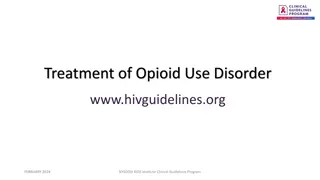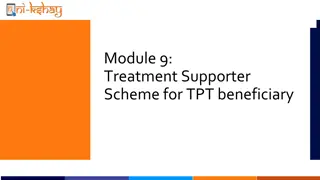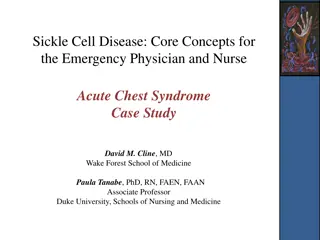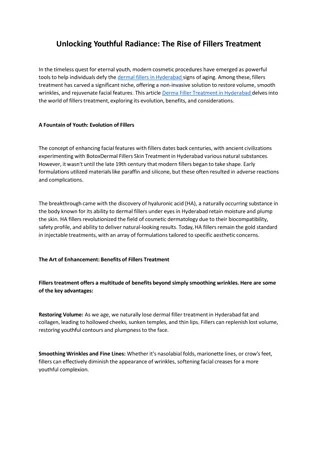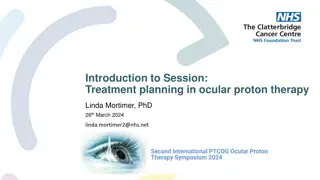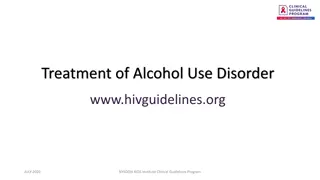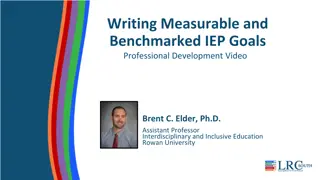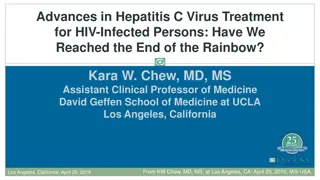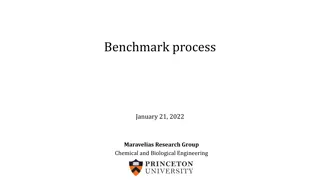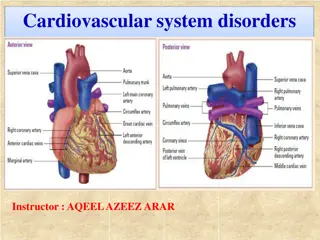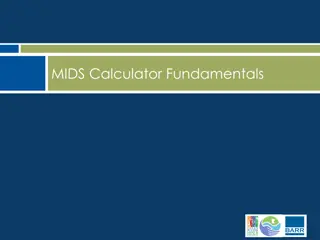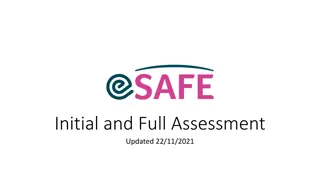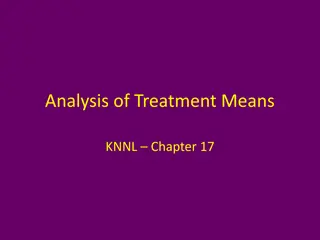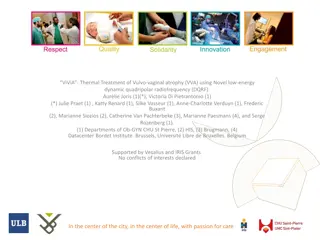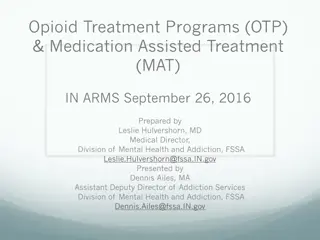
Treatment of UA/NSTEMI: Initial Goals and Strategies
After diagnosing UA/NSTEMI, the focus is on pain relief, optimizing hemodynamics, and risk assessment. Sublingual/IV nitroglycerin, oxygen therapy, and beta-blockers play a key role. Consideration of cardiac catheterization, antithrombotic therapy, and GP IIb/IIIa inhibitors is essential for high-risk patients. Fibrinolytic agents have no role in UA/NSTEMI cases.
Download Presentation

Please find below an Image/Link to download the presentation.
The content on the website is provided AS IS for your information and personal use only. It may not be sold, licensed, or shared on other websites without obtaining consent from the author. If you encounter any issues during the download, it is possible that the publisher has removed the file from their server.
You are allowed to download the files provided on this website for personal or commercial use, subject to the condition that they are used lawfully. All files are the property of their respective owners.
The content on the website is provided AS IS for your information and personal use only. It may not be sold, licensed, or shared on other websites without obtaining consent from the author.
E N D
Presentation Transcript
Non-STEMI Assist. Lec. Shaymaa Hasan Abbas
TREATMENT OF UA/NSTEMI After diagnosis of UA/NSTEMI with the aforementioned criteria, the initial treatment goals include alleviation of ischemic pain, optimization of the patient s hemodynamics, cardiac risk stratification, and choosing a management strategy For relief of ischemic pain, sublingual nitroglycerin should be administered, and if pain continues after three tablets, intravenous nitroglycerin can be infused and titrated for pain relief. Intravenous nitroglycerin can also be administered to treat any concomitant hypertension. Oxygen can be given to those with hypoxia or respiratory distress.
Likewise, beta-blockers can be used for those with suboptimal hemodynamics, such as hypertension or tachycardia, to decrease myocardial oxygen demand. Beta-blockers are also helpful for those with ongoing chest pain; however, they should be avoided in the acute setting when signs and symptoms of cardiogenic shock or hemodynamic compromise are present.
If high-risk features are present on functional testing, cardiac catheterization should be considered. With regard to antithrombotic therapy, all patients should be loaded with aspirin 325 mg. Patients who undergo an initially conservative approach should be loaded with clopidogrel 600 mg or ticagrelor 180 mg (preferred). Anticoagulation with low-molecular- weight heparin or fondaparinux is preferred, although unfractionated heparin can also be employed if needed..
In patients who are at higher risk (recurrent ischemic discomfort, dynamic ECG changes, or hemodynamic instability), a 48 72-hour GP IIb/IIIa (eptifibatide or tirofiban) infusion can be considered. It should be noted that most of these higher risk patients should then proceed to catheterization. Patients in whom an initial invasive approach is chosen should receive anticoagulation with unfractionated heparin, enoxaparin, or bivalirudin (preferred because of lower bleeding risk). They should also receive ADP inhibition with clopidogrel, ticagrelor, or prasugrel. GP IIb/IIIa inhibitors can be reserved for use during catheterization, although if bivalirudin is used as the anticoagulant, they are not necessary. Finally, it is important to note that there is no role for fibrinolytic agents in patients with UA/NSTEMI.
SECONDARY PREVENTION In addition to antiplatelet therapy described previously, a high-dose HMG- CoA (3-hydroxy-3-methylglutaryl-coenzyme A) reductase inhibitor (statin), such as atorvastatin 80 mg daily, should be prescribed on presentation even if lipids are the goal. Beta-blockers should be started as soon as feasible and maintained indefinitely. An angiotensin-converting enzyme inhibitor (ACEI) should also be prescribed indefinitely in all patients with UA/NSTEMI and heart failure, an ejection fraction <40%, hypertension, or diabetes. Angiotensin receptor blockers (ARBs) are an alternative for those intolerant to ACEIs. Eplerenone, an aldosterone antagonist, also reduces morbidity and mortality in post-infarct patients with an EF <40%, even when added in combination with ACEIs, ARBs, and beta-blockers.
SECONDARY PREVENTION Low-dose aspirin should be continued indefinitely, and ADP inhibitors should be maintained for at least a year. In addition to the long-term medical therapy discussed previously, other cardiac risk factors should be modified. Smoking cessation is imperative and is the most important action that a patient can take to prevent further cardiovascular morbidity and mortality. If the patient has hypertension or diabetes, their blood pressure and glucose levels should be optimized. Finally, for any patient on optimal medical therapy whose ejection fraction remains depressed 40 days after the event, an implantable cardioverter defibrillator (ICD) should be considered.

